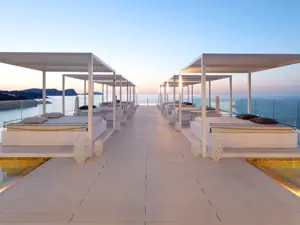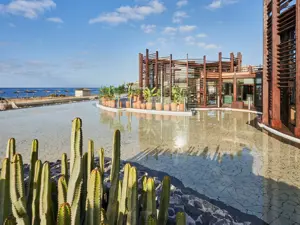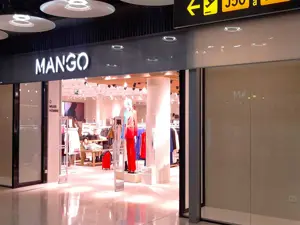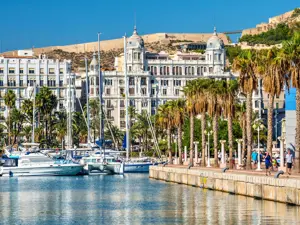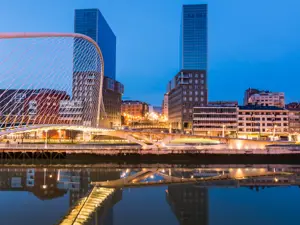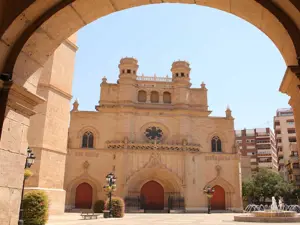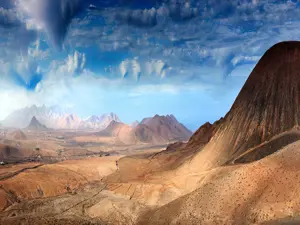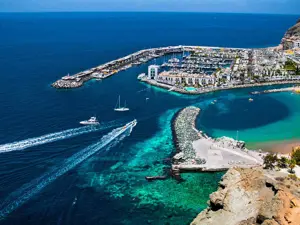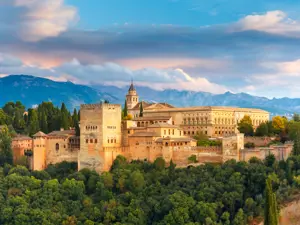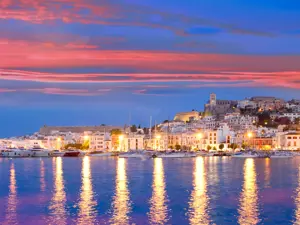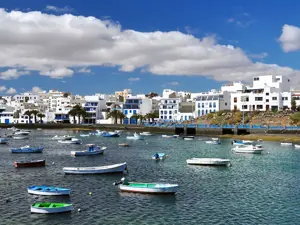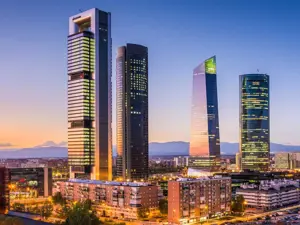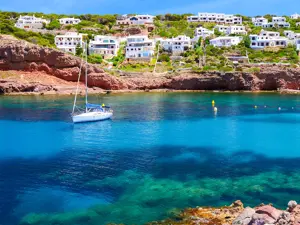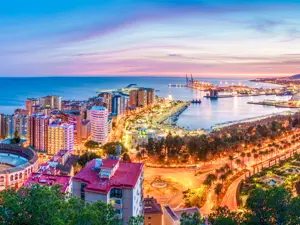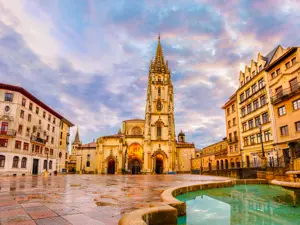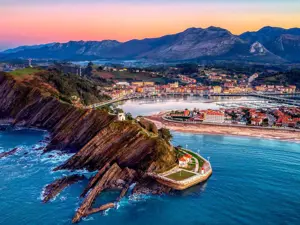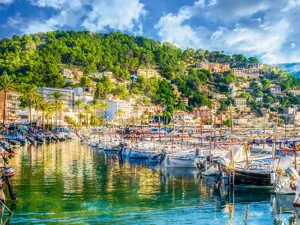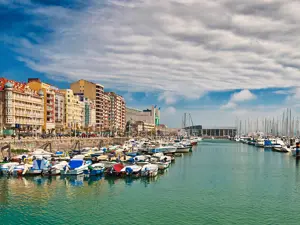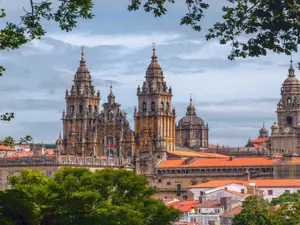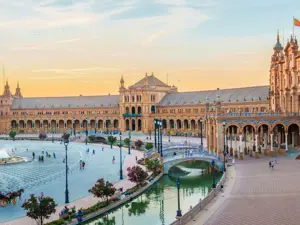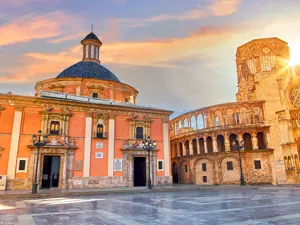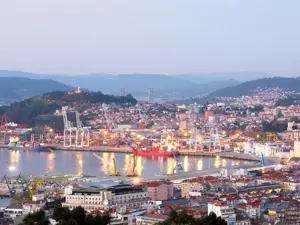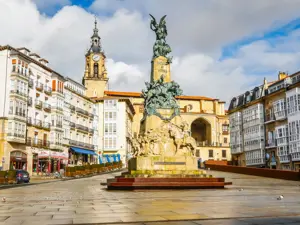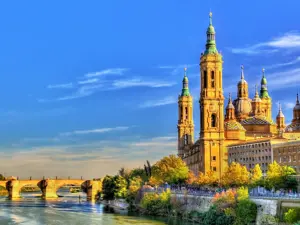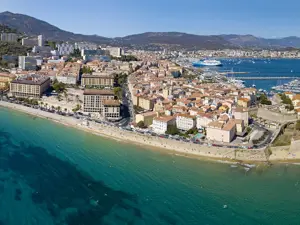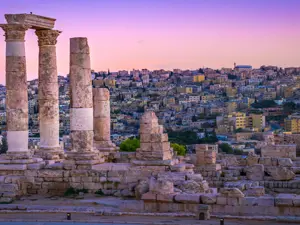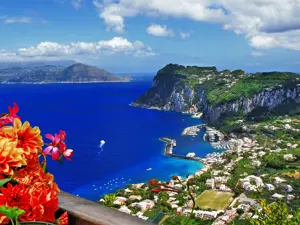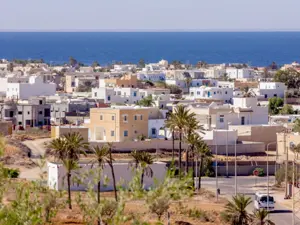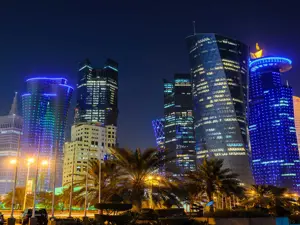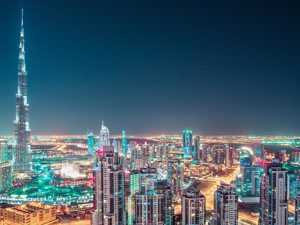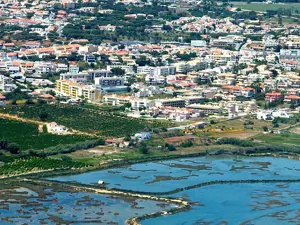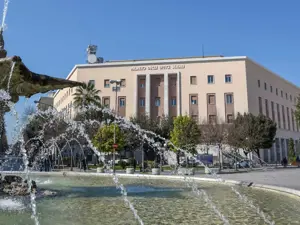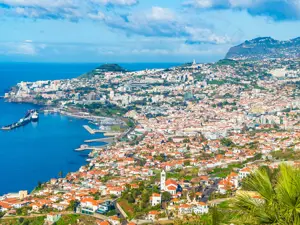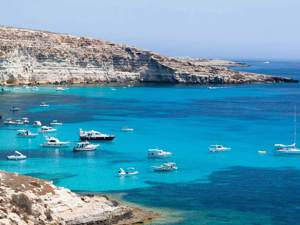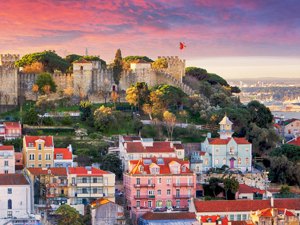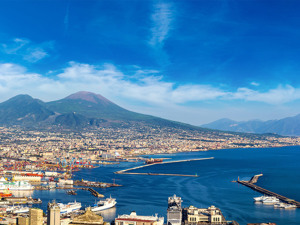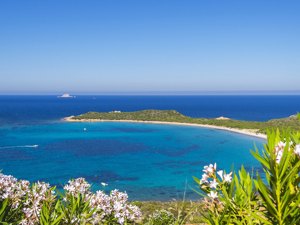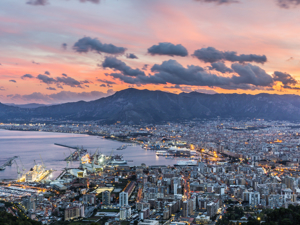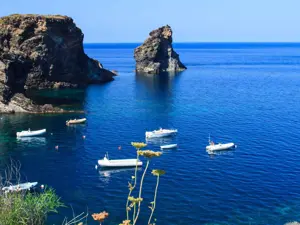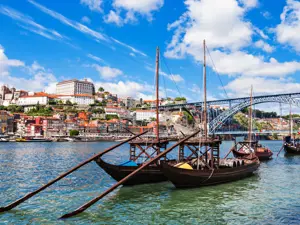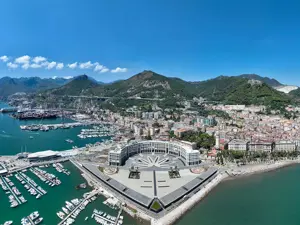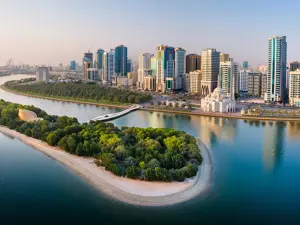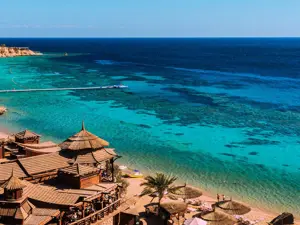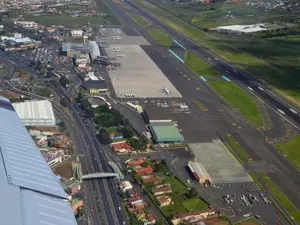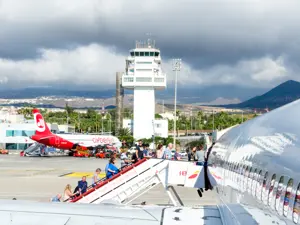The island of treasures
One National Park, forty-two protected natural areas and two UNESCO World Heritage Sites are just some of the many “treasures” on offer to visitors to the island. Tenerife is the largest of the islands of the volcanic archipelago of the Canaries and occupies a central position between the islands of Gran Canaria, La Gomera and La Palma.
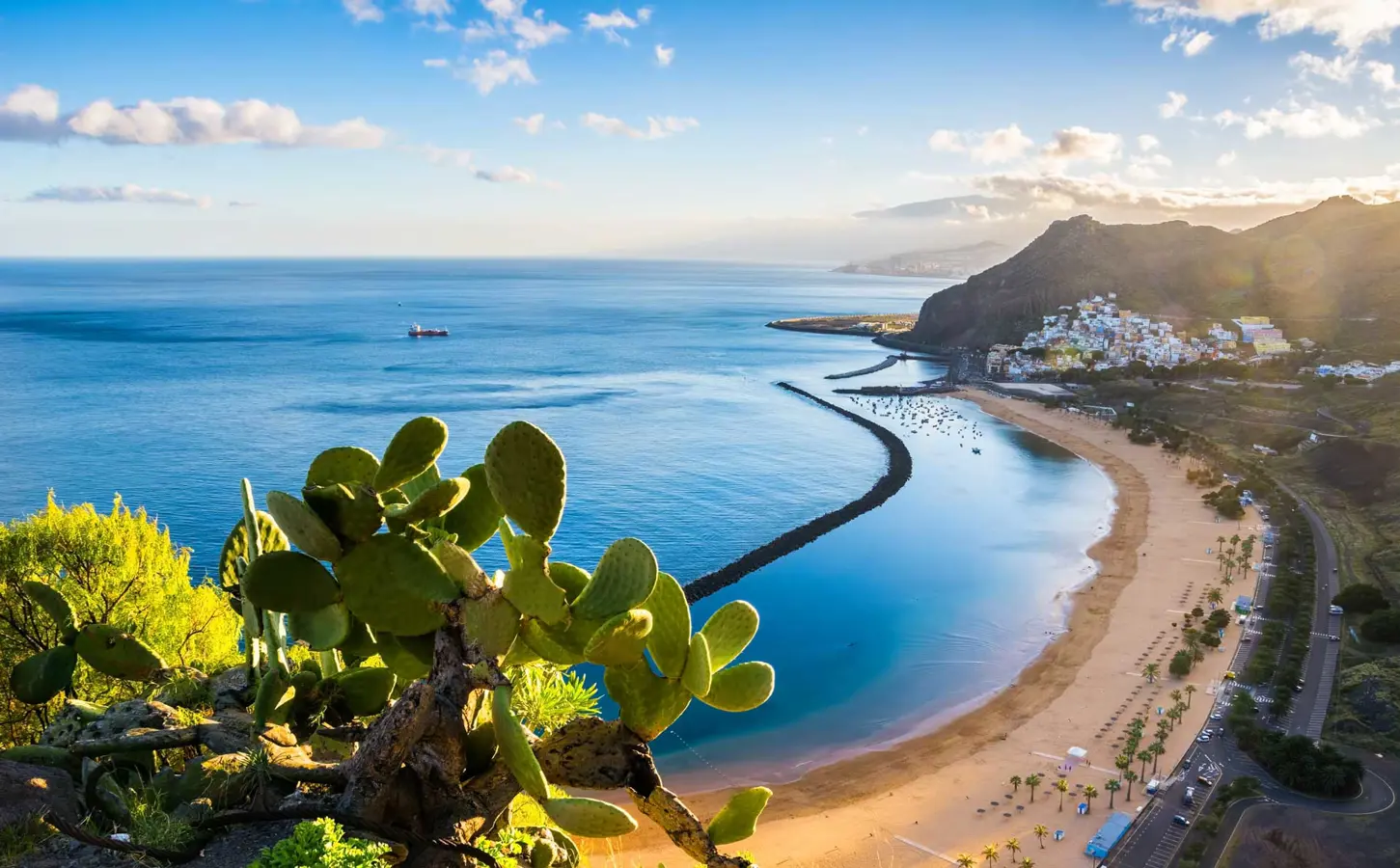
Tenerife. Las Teresitas beach. Copyright © Sisterscom.com / Shutterstock
Well known for its mild climate, it is the ideal destination for those who wish to enjoy a seaside holiday at any time of the year. Mountains, the dominant feature of the island, divide the north, which is characterised by verdant sub-tropical flora, from the south, which has plenty of wide sandy beaches and incredible rocky coastlines. The natural riches of Tenerife are extraordinary and half of the land is a protected area in which over 600 species of unique flora and fauna can be found.
The Teno Rural Park
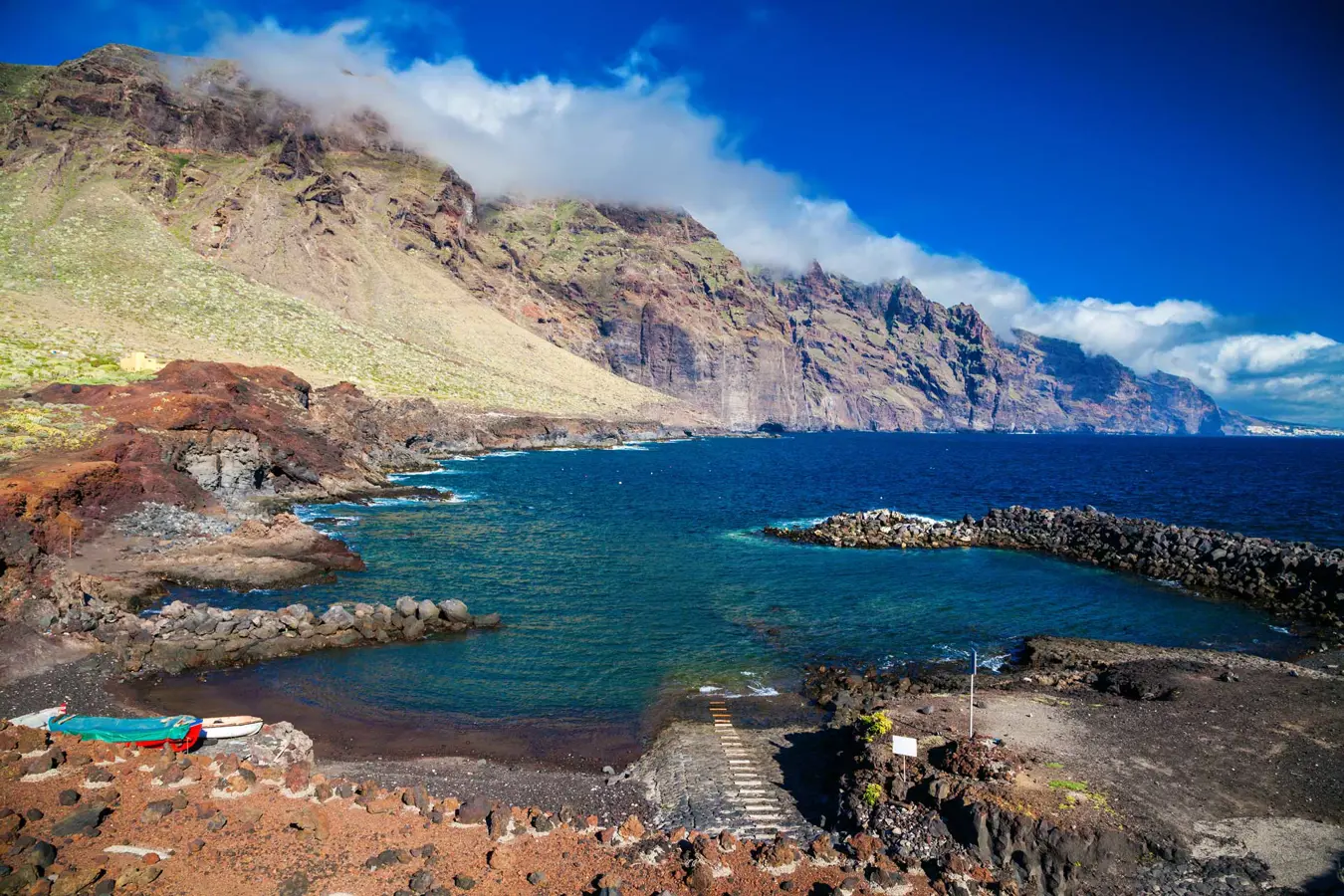
Tenerife. Teno Rural Park. Copyright © Sisterscom.com / Shutterstock
To the north-west of Tenerife, the region of Isla Baja is an haven of peace surrounded by countryside. Its villages have preserved all their traditional charm and the variety of landscapes and architectural wealth make it outstanding. Throughout Isla Baja, small coves and rock pools tempt you to take a dip, while the extraordinary Teno Rural Park, an authentic ecological treasure preserved from modern development, offers great options for active leisure in close contact with nature.
The Teide National Park
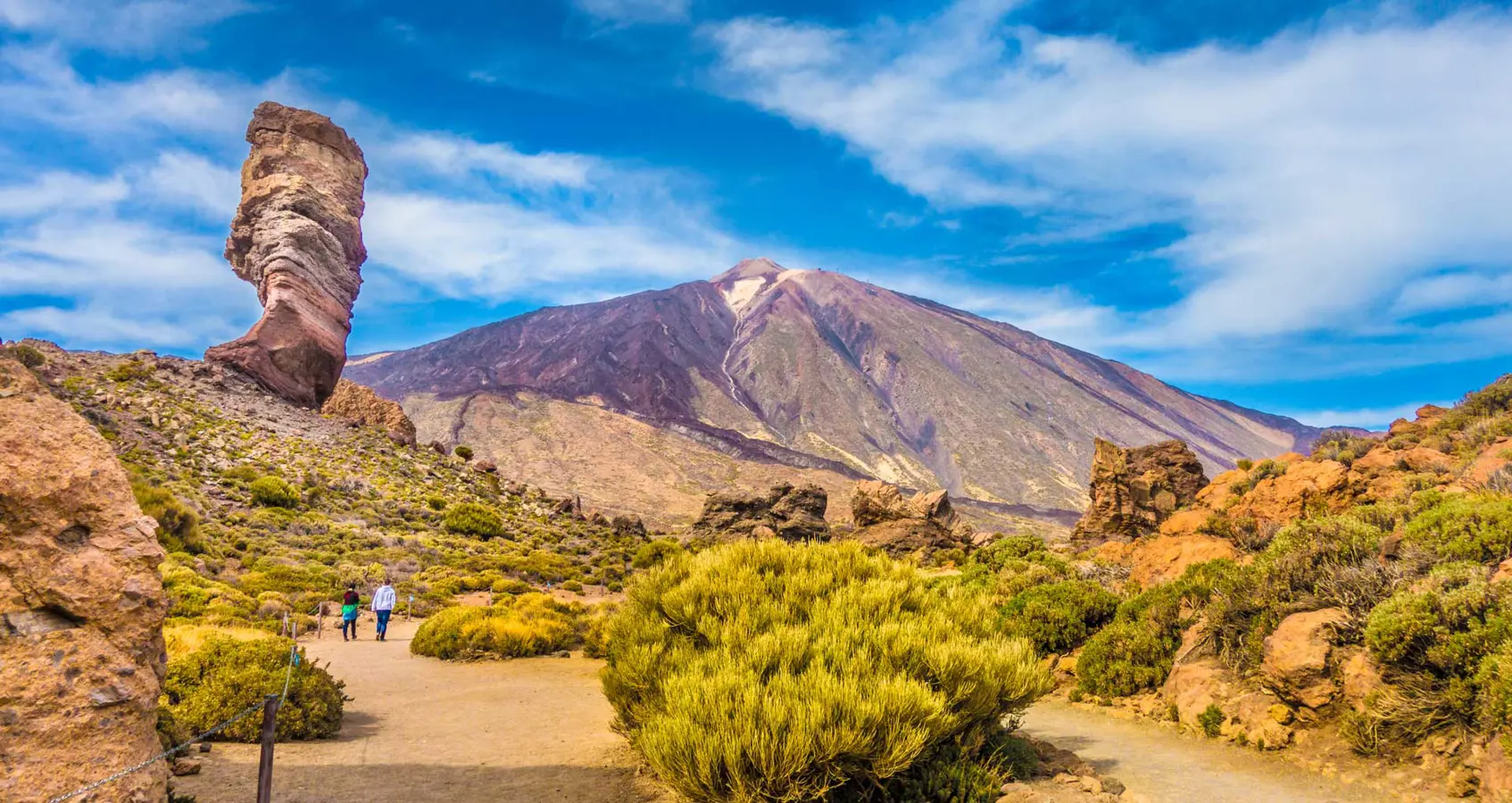
Tenerife. Teide National Park. Copyright © Sisterscom.com / Shutterstock
The Teide National Park, a UNESCO World Heritage Site, is the most famous of the four parks of the Canary islands and is also the most visited in Spain. The Teide Volcano, from which the park takes its name, dominates Tenerife with its 3,700 metres altitude, and the view from its peak (which can be reached by cable car) over the lava flows that create a blend of extraordinary colours, the beautiful island and the entire archipelago of the Canaries, is spectacular.
Puerto de la Cruz
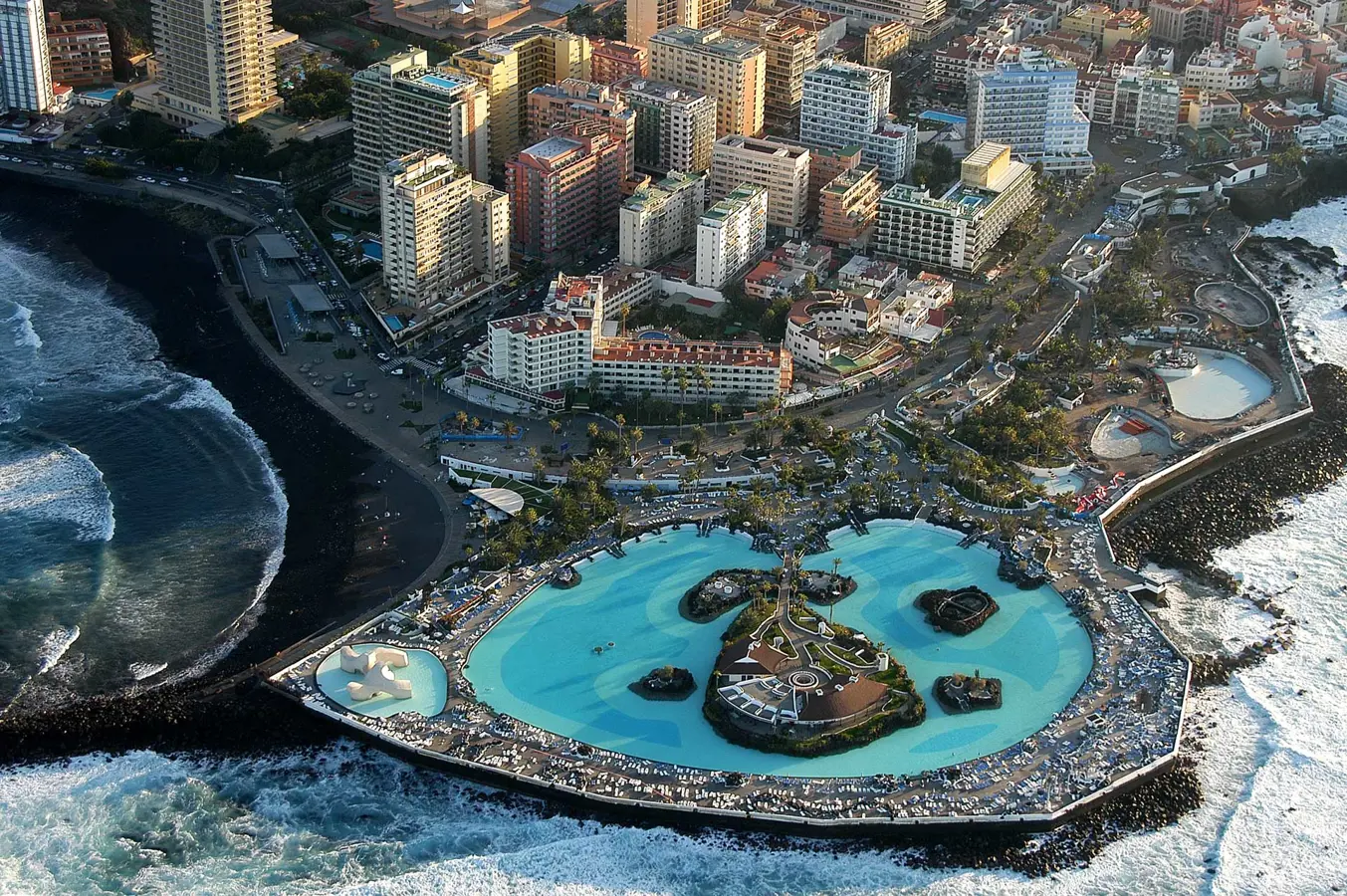
Tenerife. Aerial view of Puerto de la Cruz. Copyright © Sisterscom.com / Shutterstock
To the north lies Puerto de la Cruz, Spain’s pioneering tourist destination, situated on the sea at the foot of the fertile Orotavasul valley. Its old quarter, full of pedestrian streets, blends the history of its buildings with the modernity of an important tourist centre. Among the major attractions of the area are Loro Parque, a wonderful botanic garden with plants from every continent, and, just one km away, the artificial lake of Martianez.
Santa Cruz de Tenerife
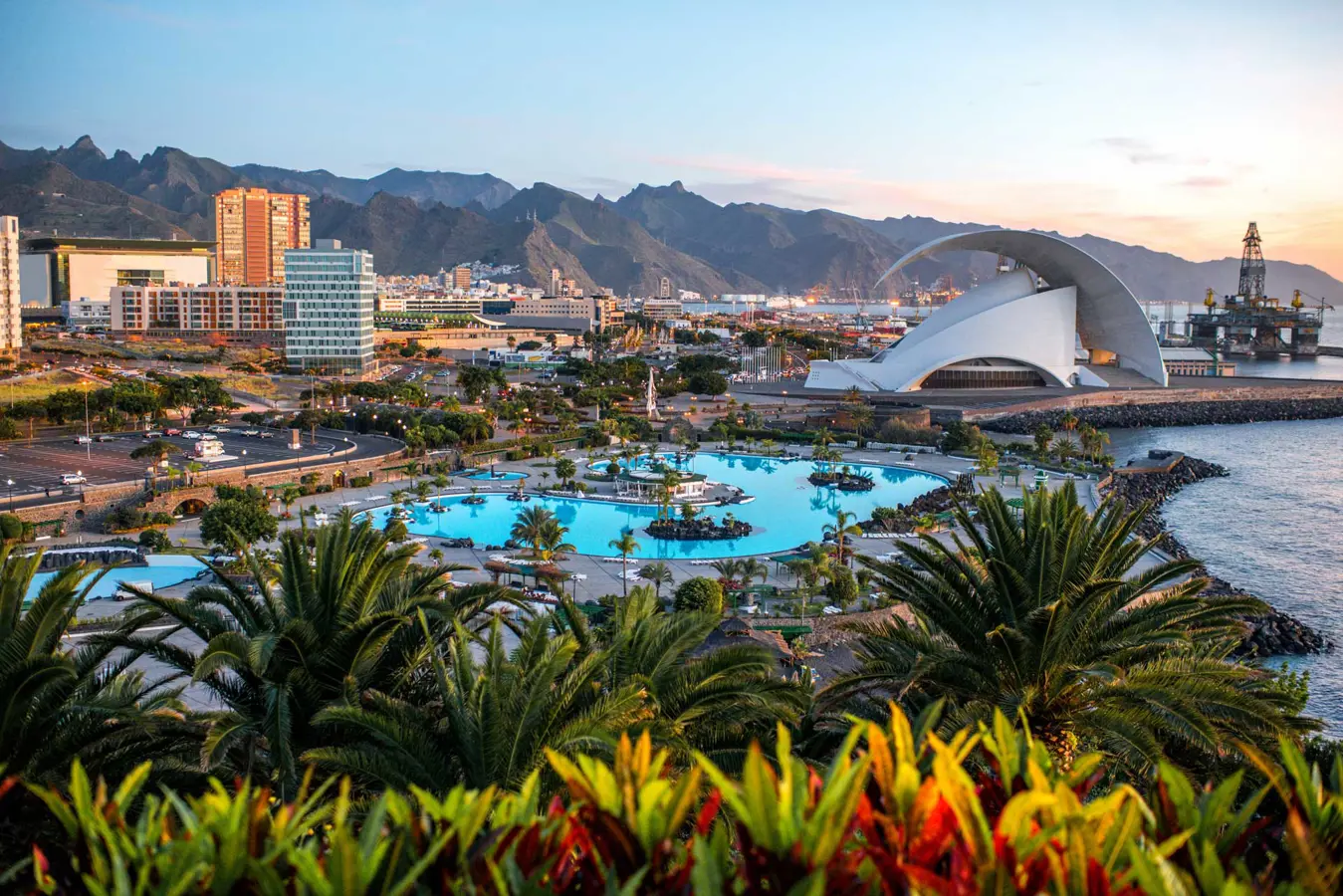
Tenerife. Santa Cruz. Copyright © Sisterscom.com / Shutterstock
The cities of Santa Cruz de Tenerife and San Cristóbal de La Laguna make up the most important inhabited centres of Tenerife. Santa Cruz is situated on the eastern point of Tenerife and is the island’s capital. It has been one of the most important historic ports on the Atlantic Ocean since the nineteenth century, when fleets sailing to the Americas would regularly stop there. Today the port is the gateway to continental Spain and a stopping place for cruise ships heading to the Caribbean.
San Cristóbal de La Laguna
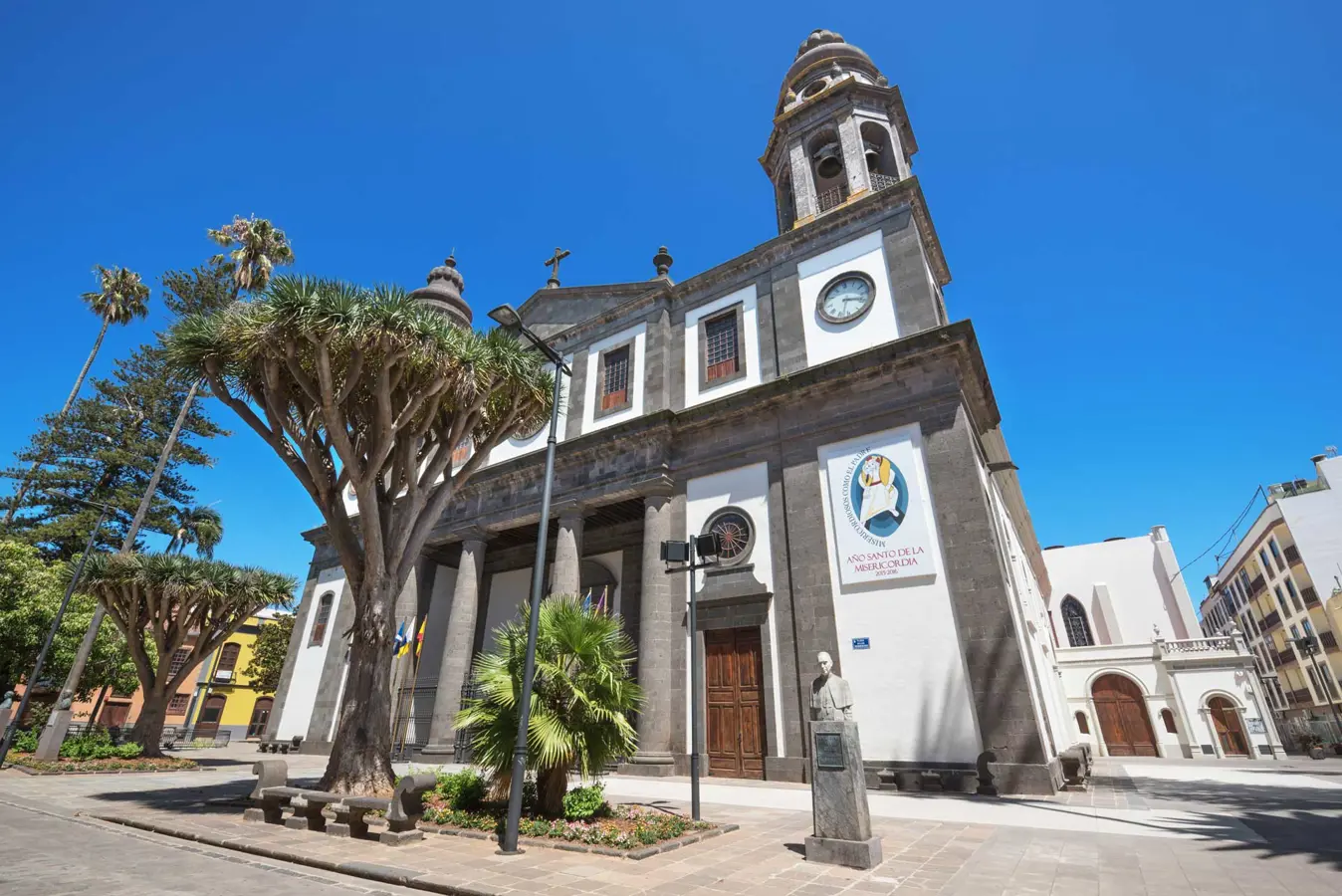
Tenerife. St. Cristobal de la Laguna Cathedral. Copyright © Sisterscom.com / David Herraez Calzada / Shutterstock
San Cristóbal de La Laguna lies inland. The second most important city on the island, it was the old capital until 1723. It is today considered the religious and cultural capital of the island and is home to the University of San Fernando and the Bishop’s Palace. Renowned for the architectural beauty of its buildings, it has also been declared a UNESCO World Heritage Site. It is highly recommended for its shopping, for sampling the local cuisine and for enjoying the best of the cultural events.
Playa de las America and Los Cristianos
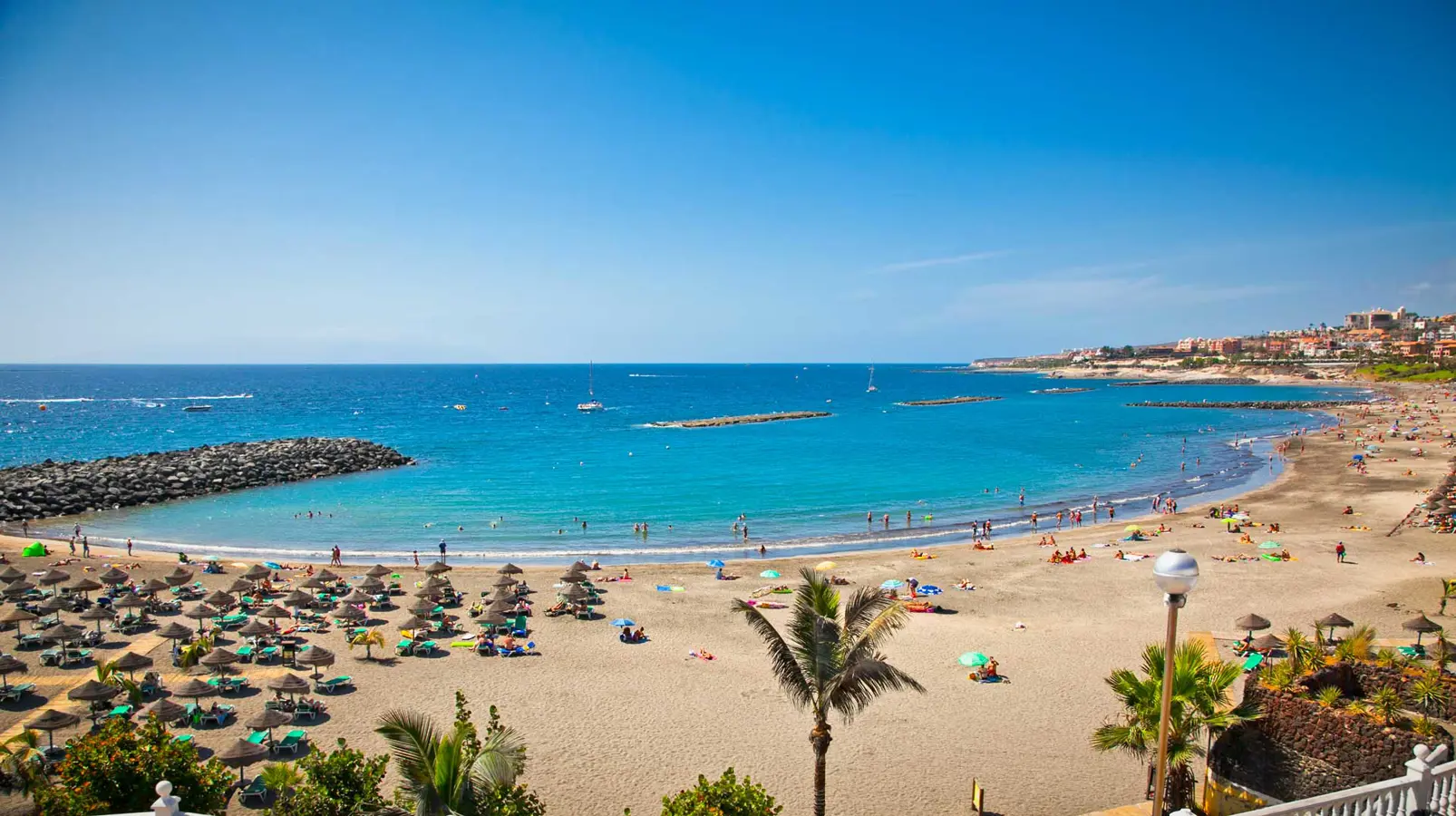
Tenerife. Playa de las Americas. Copyright © Sisterscom.com / Shutterstock
To the south lie another two famous seaside resorts: Playa de las America and Los Cristianos, where numerous shops, restaurants, bars and night clubs offer tourists all that they could wish for. Well known for the 24-hour party atmosphere, for the number of hours of sun and for the accessible, well equipped beaches, these towns are the ideal destination for young people. The area also offers picturesque villages that preserve an atmosphere charged with tradition and landscapes of great scenic interest where sport and other outdoor activities can be carried out.
Text by Enzo Cuppatri
Avion Tourism Magazine
Photos: Copyright © Sisterscom.com / Shutterstock
All rights reserved.
Tourism Board
www.tenerife.es
www.turismodecanarias.com
www.spain.info
Partnership with Booking.com
Where to sleep in Tenerife

Tenerife. Santa Cruz. Copyright © Sisterscom.com / Shutterstock
Tenerife is a welcoming island and offers different possibilities for accommodation.
To find the ideal hotel and the best offers you can do a search for the stars but also for cities.
STARS
Santa Cruz de Tenerife
Hotels for stars and services:
STARS
Hotels in cities of the Tenerife
STARS
Hotels in cities of the Tenerife
TENERIFE
All the Hotels in Tenerife
AIRPORTS
Hotels near the airports
where to go in tenerife
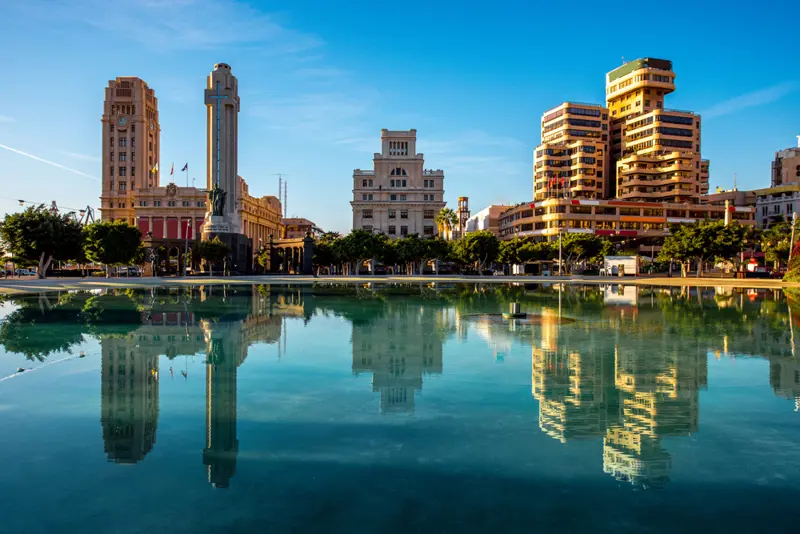
Copyright © Sisterscom.com / Shutterstock
SANTA CRUZ DE TENERIFE
The historic centre of the fascinating island capital is located near the port and the important “Plaza de España” where the pedestrian roads intersect streets full of shops and restaurants with buildings that reflect the city’s historic origins. “Iglesia de la Concepcion” (Church of the Immaculate Conception) was built in the 1500s and rebuilt in 1653. It was the original centre of Santa Cruz and up until 1859 was a gateway to the nearby town of La Laguna. Today, near the church there is a street called “Calle de la Noria” which has a lively nightlife and traditional houses that have been transformed into bars and “tascas”. The city’s ancient quarters, “Iglesia de San Francisco”, “Plaza Principe de Asturias”, “Plaza de La Candelaria” and the city market “Nuestra Señora de Africa”, are not to be missed.
The modern side of the city is represented by TEA, Tenerife Espacio de las Artes, a museum where exhibitions, photographs and works of art are displayed.
The modern side of the city is represented by TEA, Tenerife Espacio de las Artes, a museum where exhibitions, photographs and works of art are displayed.
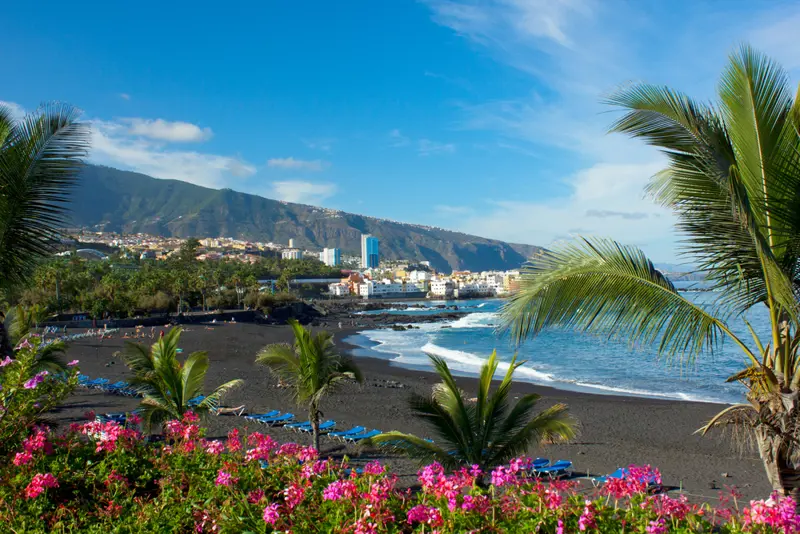
Copyright © Sisterscom.com / Shutterstock
OROTAVA VALLEY
Green palms, black volcanic earth and a deep blue sea are the main characteristics of this area. Also know as the Valle Taoro Guanche, it is divided into three municipalities. The beaches are made up of black volcanic sand and are a haven for surfers. The vineyards are also an important aspect of the island.

Copyright © Sisterscom.com / Shutterstock
SAN CRISTÓBAL DE LA LAGUNA
San Cristóbal de la Laguna is located 9 km from the capital and is a charming town that is not to be missed. Simple Canarian architecture, art galleries, boutiques and some of the oldest shops on the island are located here. This University city features a beautifully preserved historic district that was declared a UNESCO World Heritage site. The Teatro Leal is an interesting feature: it was built in 1915 and decorated with murals and oil paintings of beautiful landscapes, nymphs and ancient Greek scenes.
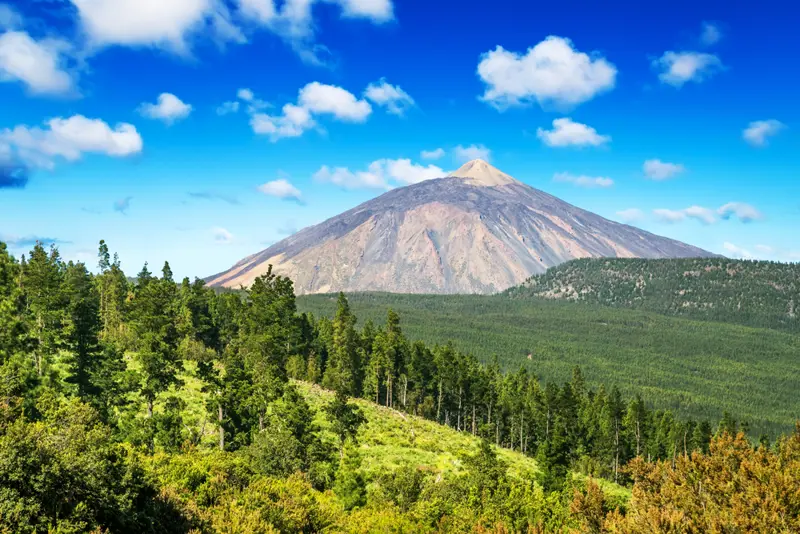
TEIDE NATIONAL PARK
The park is one of few locations with volcanic island ecosystems. It was established as a National Park in 1954 and has undergone several changes as a result. The area includes an enormous “hot basin” of 14 km in diameter caused by the draining of a magma chamber. The species of plants that inhabit this area vary; the most well-known are the Teide violet and the Mount Teide bugloss. The fauna is dominated by about 400 species, and insects are the most abundant.
Museums and Auditorium in Tenerife
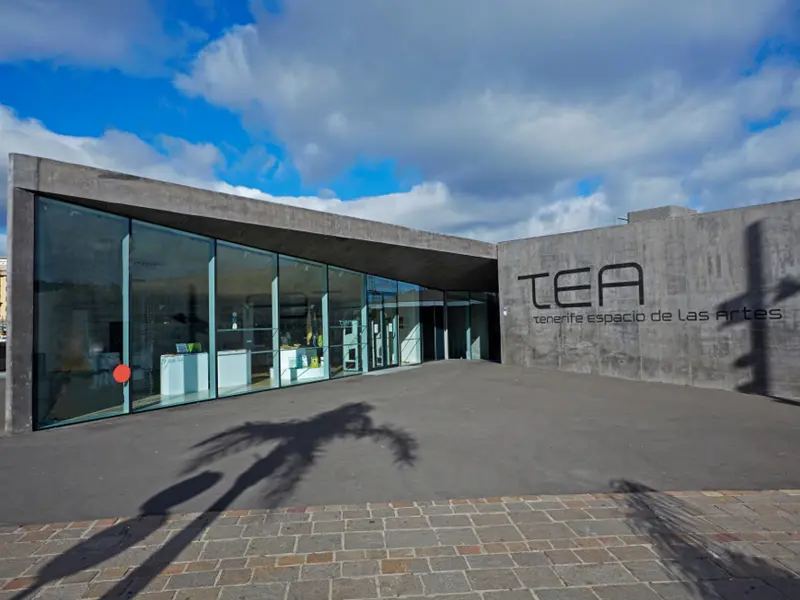
TEA TENERIFE ESPACIO DE LAS ARTES
This is primarily a meeting place where knowledge can be shared. The architects Jacques Hetzog, Pierre de Meuron and Virgilio Gutierrez built this 20,600 square metre structure with a library, an alternative cinema, a reading hall and a museum. This unprecedented innovative idea for the Canary Islands unites contemporary art with new technological change.
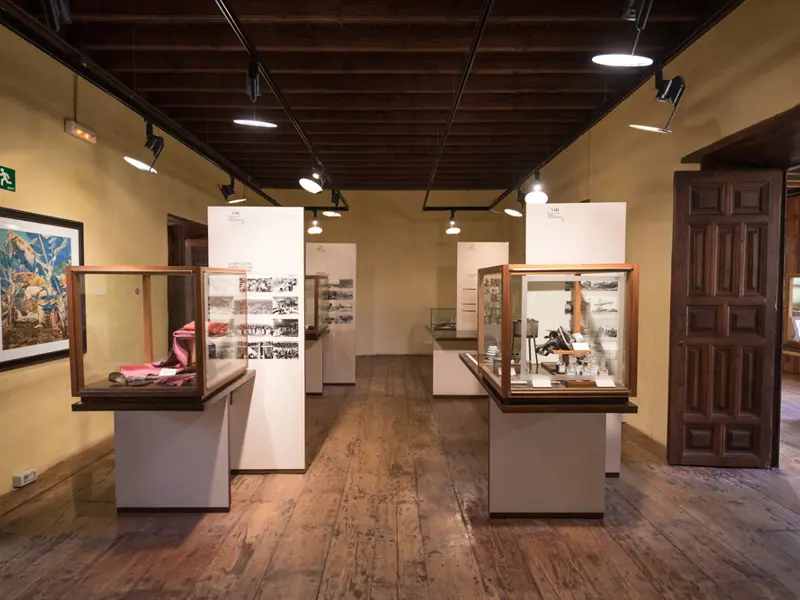
Copyright © Sisterscom.com / David Herraez Calzada / Shutterstock
MUSEO DE HISTORIA Y ANTROPOLOGÍA DE TENERIFE
This museum displays collections, exhibitions and activities related to the rich history and culture of the island of Tenerife. There are two locations and both display a great variety of cultural items and offer many activities.
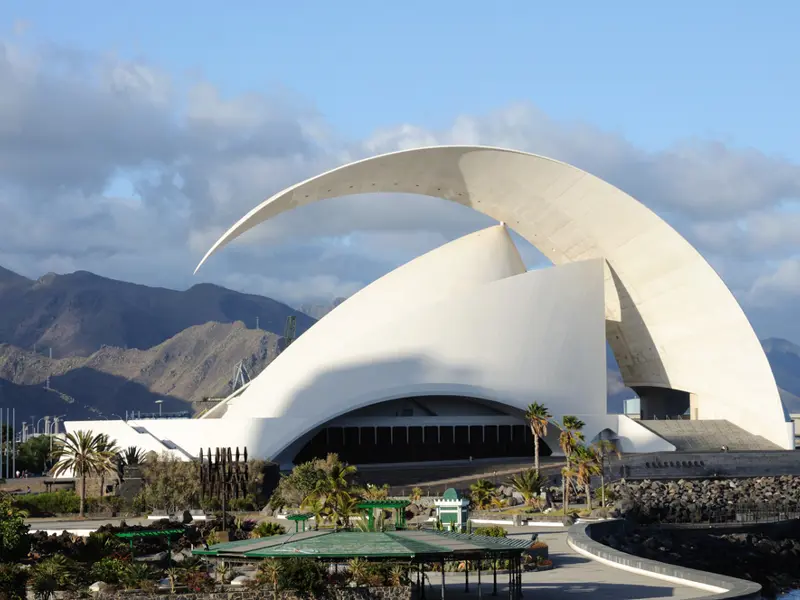
Copyright © Sisterscom.com / Shutterstock
AUDITORIUM ADÁN MARTÍN
Designed by the architect Santiago Calatrava as one of the sites of the island’s cultural and architectural, it was opened in 2003. It offers a wide range of cultural, musical and conference activities as well as being the official home of the Tenerife Symphony Orchestra and the Tenerife DanzaLab.
Partnership with GetyourGuide
Tour and excursions in Tenerife
Shopping
You might be interested in
Other destinations
Airports nearby Tenerife



